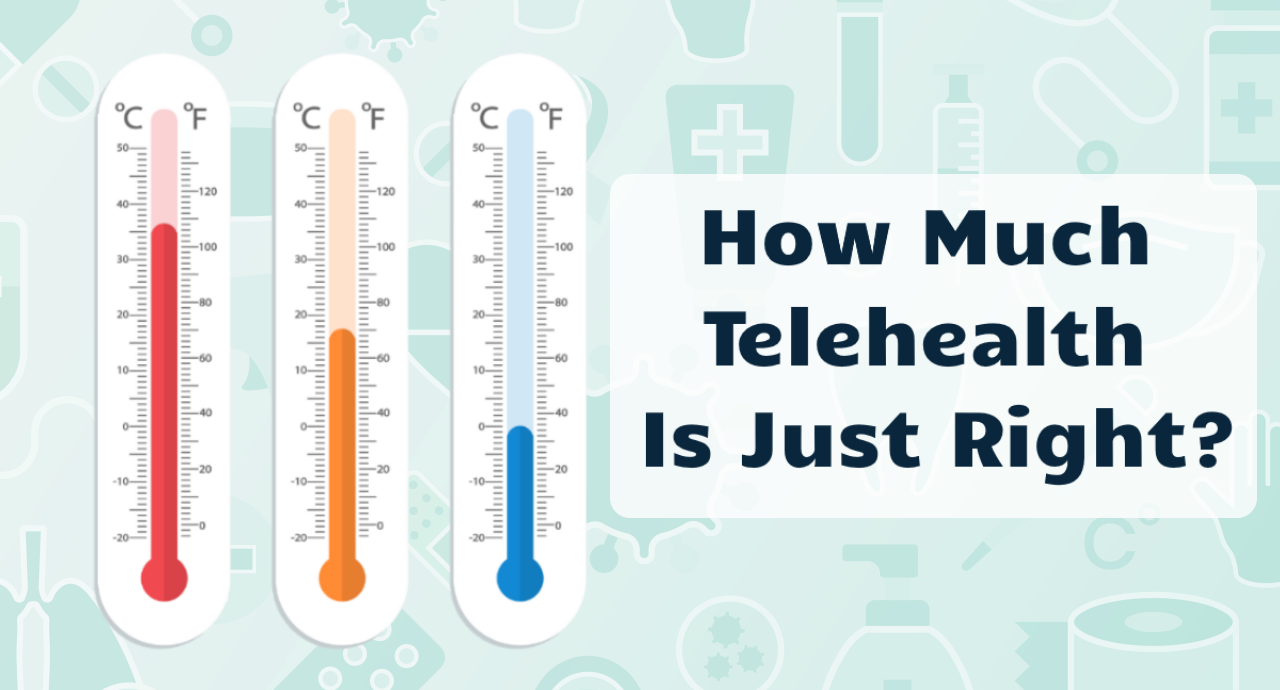During the height of the Covid-19 health crisis in the spring of 2020, the use of telehealth to deliver care skyrocketed into Himalayan altitudes. In 2020, Medicare fee-for-service telehealth use increased 63-fold from 840,000 to 52.7 million.
Especially those organizations who had prior experience with telehealth were quickly able to ramp up telehealth operations.
I remember, almost 2 years ago, being “on the ground” with an FQHC, gradually optimizing school-based telehealth and telebehavioral health. As the reality of Covid hit, we set up video-telehealth for 25 primary care clinicians across 5 clinics within 36 hours. They already had the technology, there was a precedent for telehealth and the motivation to continue serving their patients was high. Within a few weeks, their volume was almost close to normal, with over 80% of care being delivered remotely.
By June 2020 another organization, a large New York-based health system, reported doing 6,000 telehealth visits a day, also building on the experience they had previously gained.
Delivering Care at the Distance Well
But many organizations with no prior experience in video telemedicine struggled and their patients struggled with them. Frustrated with technical and workflow problems and with little to no proper training on how to use this new care modality. Most providers at those organizations quickly switched over to telephonic care when reimbursement for that modality became available during the public health emergency.
As the lockdown ended and personal protective equipment became more available, the use of telehealth went gradually down and has stayed mostly down significantly compared to its use during the early weeks of the Covid-19 health crisis. The two large surges (Delta and Omicron) temporarily increased the use of telehealth but overall the numbers for telehealth use in 2021 were significantly smaller than in 2020 – with some states’ telehealth use dropping by as much as 60% compared to 2020.
The Goldilocks Zone



In my opinion, looking for telehealth as a percentage of the overall visits is asking the wrong question. That’s like trying to set forth what percentage of imaging tests should be x-rays or MRIs. The appropriate use of either depends on the patient’s medical history and current symptoms, and (unless when applied to a very large sample size) cannot be regulated as a desired percentage.
Telehealth is first and foremost a clinical tool. It’s a modality of care delivery that clinicians can wield wisely to ensure a proper diagnosis and proper care management, including consistent patient engagement (where telehealth really shines).
Based on my definition of “100% telehealth”, the “just right” zone of telehealth thus depends on the affirmative answers to 3 questions:
- Does the clinician deem Telehealth as the appropriate care delivery method for this patient?
- Does the patient desire to use telehealth?
- Does the patient have the technical prerequisites (device, connectivity & digital literacy) for telehealth?
Only when all three criteria are met should telehealth be offered. Estimating what percentage of a clinicians’ practice should be telehealth, is however relatively unpredictable.
Looking at the first criterion, the clinical appropriateness, it comes to no surprise that telehealth use remains very high in behavioral health. Despite some trepidation, many behavioral health professionals have found telehealth in most cases to be equivalent and in some cases to be even preferable to in-person visits.
Confessions of a Telehealth Consultant
But not all patients necessarily desire telehealth all the time. I, personally, had a great time lining up a telehealth service within 45 minutes for my daughter’s increasingly concerning rash a few days after a wasp bite; resulting in a same-day prescription bringing relief within hours.
For my regular health improvement visits with my physician that I use for my advanced primary care needs, however, I do prefer the in-person experience, even though the visits don’t include any exam, not even the basic vital signs. We cover a wide range of topics in our 30-minute visit and on a couple of occasions being there in person has proven beneficial, such as receiving a medication sample.
But for routine visits or the review of test results, I’d definitely prefer the “7-minute” version vs. the 77-minute “drive, park, wait, check-in, wait, visit, wait, check-out, drive” experience. Frankly, I’d also prefer telehealth for my dental cleaning, but I guess that won’t be happening for quite some time…
Getting to Just Right
So why should healthcare leaders and clinicians care about what is “just right” for their organization? Primarily it is because healthcare’s patients are increasingly evolving into modern healthcare consumers.
The Covid-19 health crisis has been an unprecedented boon for virtual-only telehealth organizations such as Teladoc, AmWell or MD Live. Oftentimes commercial health insurers are promoting the use of such services to prevent their members from incurring higher cost through visits to urgent care, the ER, or even to their local primary care physician.
Likewise, increasingly employers are discovering the value of “virtual first”, as prominently promoted by Amazon Care which, after an almost 2-year trial phase in their native Seattle, is now available nationally.
Over time, more and patients will have experienced the convenience and ease of telehealth — especially when the organizations offering telehealth have telehealth technology that is optimized for the patient experience (unlike most EMR’s built-in clunky solutions) and with superbly trained and motivated clinicians that enjoy practicing medicine from the comfort of whatever location they chose to live.
If your organization cannot match that experience, then patients, who nowadays have choices and value convenience, will take their care experience elsewhere and fire their traditional care team.
The smooth integration of telehealth into the established processes of a traditional care team is not easy. Virtually all workflows have to be modified to offer a hybrid-care experience. Some clinicians need to be convinced that telehealth can very well be clinically appropriate and organizations have to shift even faster toward a customer service mindset, that caters to the preferences of their “paying customers”.
You ratio of “what’s right” will vary, but now is the time to start measuring that.
Want to discuss with Christian what “just right” looks like for your organization? Email, text, or call to set up a time for a chat.








To receive articles like these in your Inbox every week, you can subscribe to Christian’s Telehealth Tuesday Newsletter.
Christian Milaster and his team optimize Telehealth Services for health systems and physician practices. Christian is the Founder and President of Ingenium Digital Health Advisors where he and his expert consortium partner with healthcare leaders to enable the delivery of extraordinary care.
Contact Christian by phone or text at 657-464-3648, via email, or video chat.







Leave A Comment